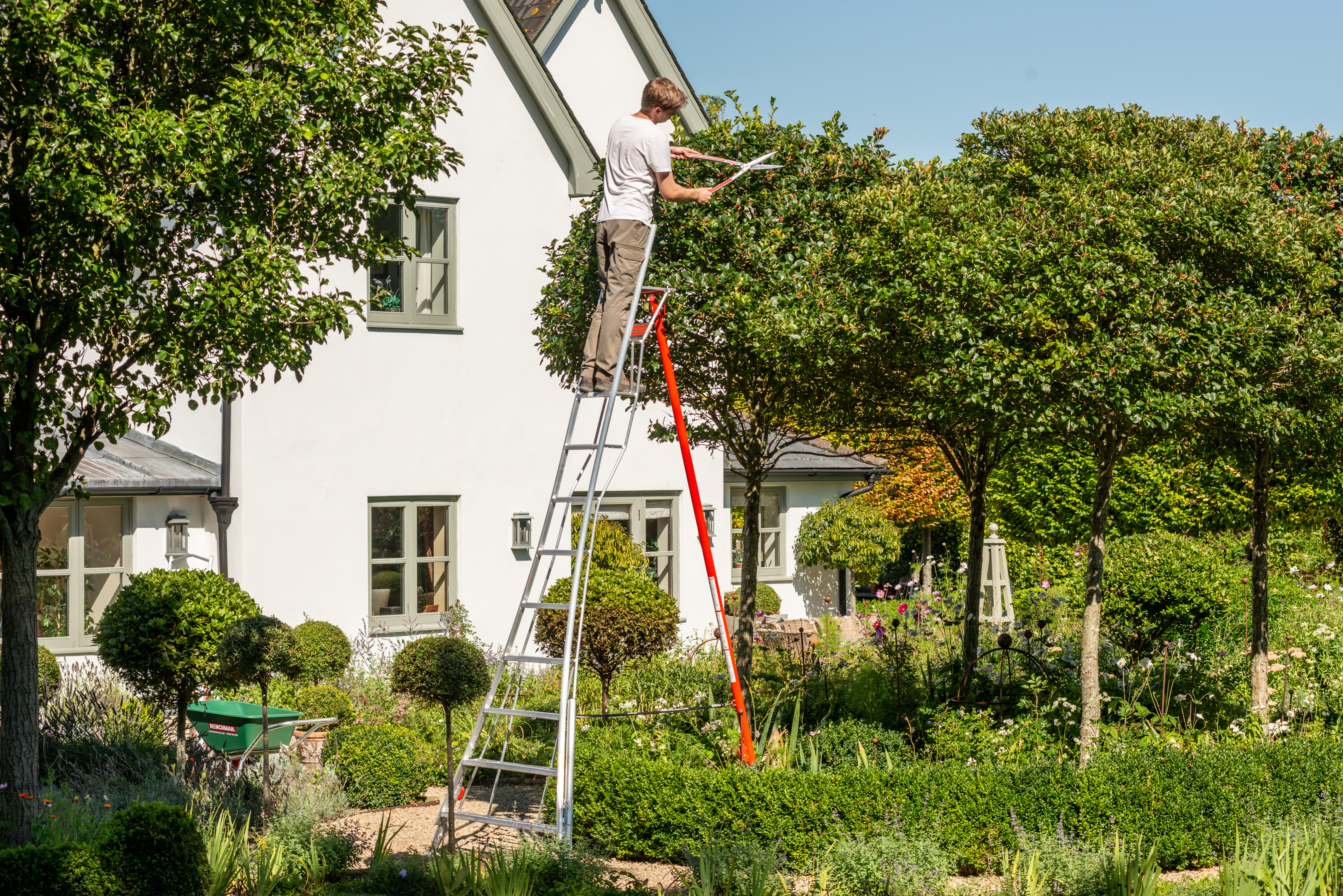Ladder Inspection Checklist – Henchman’s Tripod Ladder Safety Guide

At Henchman, we are always promoting ladder safety and being safe when working at height. Our Tripod Ladders are made for uneven ground so are the perfect ladder for use in the garden. Henchman Tripod Ladders are EN131 certified and carry the BSI kitemark.
Why is ladder certification important?
Working at Height Regulations dictates that you’re legally responsible for protecting the safety of your staff and the public. As a professional or a business, you need to be confident in the equipment you are using and providing to ensure the ladder is suitable for the work to be performed, as well as reliable in design, strength and build quality. Our Henchman Fully Adjustable PRO Tripod Ladder has been made in mind for the pros who will use the ladder daily.
For personal use, you can be confident that when you’re correctly using a Henchman Tripod Ladder, you’ll feel safe and level on uneven ground when working in the garden or around the home.
What is EN131 and what is the BSI Kitemark?
The British Standards Institution is the national standards body in the UK. The EN131 is a European committee for standardisation harmonised standard for portable steps and ladders, manufactured from metal and certain other materials such as aluminium. It covers minimum safety requirements and regulations for ladders.
In short, it means our tripod ladders have been put through rigorous testing, a number of safety checks and have been built to a top-quality standard; making them the only certified tripod ladder on the market in the UK and EU.
We chose to Kitemark our ladders as the Kitemark certification goes above and beyond product testing. It looks at all aspects of the supply chain too, so you can rest assured that the ladders you receive are properly designed for the job you’re performing.
Why use a tripod ladder when working on uneven ground?
Most gardens aren’t flat; therefore, you need a ladder that is going to keep you level and stay stable. Henchman Fully Adjustable Tripod Ladders have three independently adjustable legs meaning you can keep the ladder level on uneven terrain such as slopes, ditches, and steps, giving you extra stability. The design of a tripod allows the ladder to create a wider splayed base and ensures all the feet remain in firm contact with the ground, giving you more stability. The clawed feet help to grip into softer ground adding more stability. When using the tripod on hard surfaces, make sure you add the rubber feet to avoid slipping.
How can I make sure I stay safe on a tripod ladder?
Setting it up and using it correctly
First and foremost, when you set up your tripod ladder, you need to make sure it is level by adjusting the legs accordingly. You can gauge this by seeing if the chain is level from the side.
Never pull a ladder back towards you, this stands for tripod ladders as well, lean into the ladder while you climb it.
Always keep your weight over the back leg of the tripod ladder when you are working, so you don’t overreach.
If you are on hard ground, put the rubber feet to prevent damage to the clawed feet and give you extra grip.
Ladder inspection and regular maintenance
Performing regular ladder inspections is a must. If your ladder has been out of action for a little while, for example over winter, it would be a good idea to go through the below safety checks before use. If you use your ladder regularly, these checks should be carried out more frequently.
Ladder Inspection Checklist
To help you carry out a thorough inspection of your ladder, we’ve put together this quick checklist so you know you’re working safe and sound.
| Area | Checks |
| Stiles and Legs | Check they are not bent, bowed, twisted, dented, cracked, and corroded. |
| Check fixing points around other components are in good condition. | |
| Fixings and Welds | Check they are not missing, loose, corroded, or damaged. |
| Rungs/Steps | Check none are missing, loose, excessively worn, corroded, or damaged. |
| Hinges | Check between front and rear sections that there is no damage, anything loose, or corrosion. |
| Chain Carabiner, Back Rail and Corner Braces | Check nothing is missing, bent, loose, corroded, or damaged. |
| Ladder Feet | Check none are missing, loose, excessively worn, corroded, or damaged. |
| Whole Ladder | Check it is free from contaminants, e.g. dirt, mud, paint, oil, or grease. |
| Locking Latches | Check none are damaged or corroded. Make sure they are functioning correctly. |
| Platforms | Check nothing is missing or needs fixing. Check for damage and corrosion. |
Print a copy of this checklist.
We have tripod ladder spares
While you are doing your checks, if find something is missing or broken; we have a range of spare parts including, spring pins, rubber feet and legs. If you are looking for the best Tripod Ladder on the market, then look no further than Henchman. We have a range of tripod ladders from 5ft – 16ft. Give our friendly team a call on 03333 444 229 or use our Find a Ladder tool to see what ladder you need for the job.



